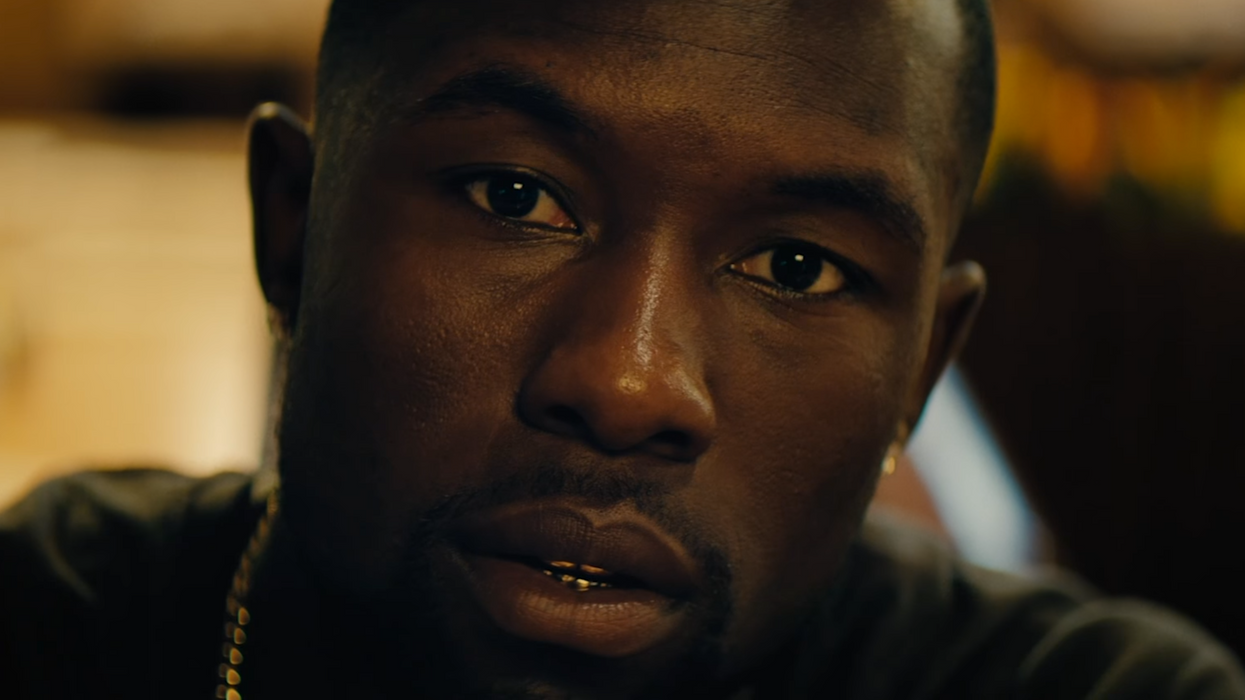How 'Moonlight' Uses Cinematography to Wreck Us Emotionally
How do camera placement, lighting, and eyeline all cooperate to create emotion in a movie?

There might not be a better film to explore these multiple elements than Oscar-winning drama, Moonlight.
In this video from TIFF Originals, director of photography James Laxton takes viewers through a single scene in the movie, specifically the moment where adult Chiron (Trevante Rhodes) reunites with Kevin (André Holland). Laxton explains the choices made to convey the scene's tone and shares some behind-the-scenes details.
Watch the clip below.
Lighting
From the opening of the scene, as Chiron approaches the diner, lighting is at play. Laxton placed lights within a tree to cast dappled shadows on the character as he walked beneath, creating entirely new visual interest from the very first second.
Outside the diner, the bulbs were changed to give a more blue hue. Inside, much of the lighting is practical and natural, coming from golden, warm hanging lamps and overhead lighting.
The long camera take at the early part of the scene, which incorporates wide, slow pans, was somewhat restrictive as far as lighting was concerned, so practical lighting was key. Laxton says some LED lights were used to lend some softness to the actors' faces.
Laxton points out that the color and quality of a scene's lighting can help an audience connect with what is on screen, especially if it is familiar.
Camera placement and eyeline
Laxton says he often put the camera as close to the actors as possible, basically touching them and getting the lens near their eyeline.
This was a conscious choice in order to bring the viewer into the conversation, so it feels as though the character is speaking to the audience as well as their counterpart.
"Because, you know, if you're further out, that relationship with the audience changes," Laxton says.
Laxton also points out that movement, lens choice, and shot choice all influence emotion and perspective in a scene. How far or close the camera is, or how slowly or quickly the camera follows a character, changes the tone of a shot.
Breaking the fourth wall
Some of Moonlight's most impactful moments are when characters look directly into the lens, confronting the audience in emotional moments. According to Laxton, this was an idea that took shape in pre-production.
"I think for all of us around there, and especially for Barry because this is so personal to him, that just had such a deep, deep emotional impact on us," Laxton says. "It just felt like, 'Oh, that's really special. Let's keep occasionally dropping that in.'"
The eye contact is placed here at a key moment, to convey the profound connection between two characters meeting again after several years apart.
What's next? Explore some of our other Moonlight coverage
Examine the film's visual motifs, get some directing advice from Barry Jenkins, or dive into some deep analysis of the movie. Learn about Jenkins' struggles on the film, too. Then take a look at some of 2016's most stunning cinematography.
Source: TIFF Originals











![Ethos, Pathos, Logos: 20 Effective Ways to Advertise [Infographic]](https://nofilmschool.com/media-library/ethos-pathos-logos-20-effective-ways-to-advertise-infographic.jpg?id=34064614&width=600&height=600&quality=90&coordinates=560%2C0%2C0%2C0)
